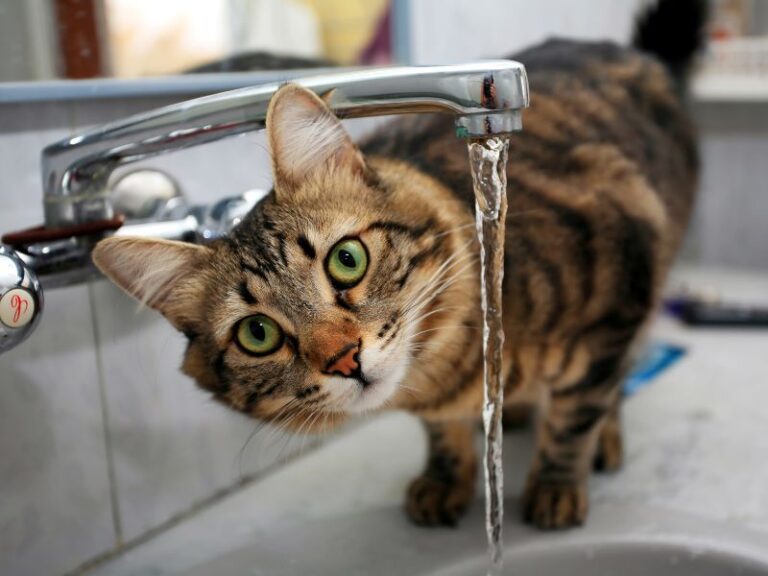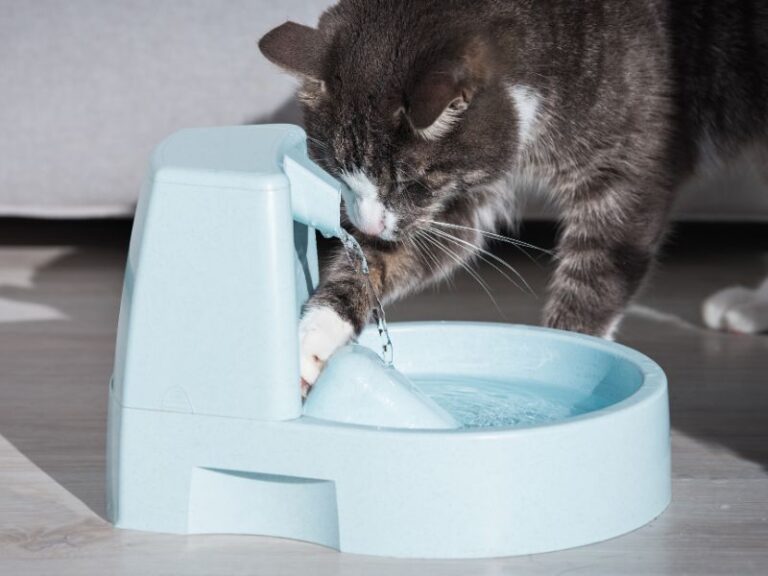Table of Contents
ToggleCats, those delightful companions who whisk through our lives with a mix of elegance and curiosity, often leave us both bemused and enchanted. Their peculiar habit of knocking things over—be it a vase, a pen, or anything in their path—sparks a blend of amusement and bewilderment. In this exploration of feline behavior, we embark on a journey to unravel the mystery behind the question that’s echoed by cat owners everywhere: Why do cats knock things over? So, gather your curiosity and let’s dive into the world of our feline friends and their endearing yet perplexing antics.
Unveiling the Inquisitiveness: Why Do Cats Knock Things Over?
The Curious Nature of Cats
Cats, those marvelous creatures known for their graceful poise and intriguing behaviors, possess an innate curiosity that often defies explanation. This curiosity, a fundamental aspect of their nature, fuels their interactions with the world around them in ways that both captivate and puzzle us.
The Drive Behind the Behavior
Curiosity Knows No Bounds From the stealthy stalking of shadows to the mesmerized gaze fixed on a fluttering leaf, cats’ curiosity is a force to be reckoned with. Their inquisitive nature stems from an evolutionary lineage that thrived on exploration and adaptation. Whether they’re domesticated or not, this curiosity remains woven into their genetic fabric, urging them to inspect, paw, and occasionally topple objects in their path.
The Playful Paw Swipe When a cat encounters an object, their keen senses come alive. The sight, smell, and texture of an item trigger an instinctive need to investigate. This investigation often takes the form of a gentle paw swipe, a tactile exploration that serves to satisfy their curiosity. In some cases, this exploratory gesture may escalate, leading to the object’s untimely tumble.
A Delicate Dance of Whimsy
The world is a canvas of play waiting to be explored. The act of knocking things over isn’t just random chaos; it’s a calculated interaction with their environment. Their dexterity and coordination allow them to assess an object’s stability and predict its response to their touch. It’s a playful dance where physics becomes their partner, guiding the artful choreography of object manipulation.
The Enchantment of Cause and Effect
Cats are natural philosophers, forever curious about the connections between actions and outcomes. The act of knocking something over presents a tangible cause-and-effect scenario: their touch sets off a chain reaction, yielding a sound, movement, and sometimes even a cascade of objects. This tangible response becomes a captivating display of their influence over the world around them.

Evolutionary Roots and Hunting Instincts
Ancestral Echoes in Modern Companions
To truly understand the behavior of our modern domestic cats, we must journey back through the corridors of time to their wild ancestors. Cats, with their sleek grace and sharp instincts, share a lineage that traces back to ancient hunters who stalked the untamed landscapes. Millennia of evolution have fine-tuned their traits, but the echoes of their ancestors’ habits still resound in their behavior today.
From Predators to Companions
The domestication of cats began as a mutually beneficial relationship. Early humans provided shelter and scraps, while cats lent their unparalleled skills as hunters. This partnership granted cats an opportunity to showcase their hunting prowess, a trait honed by generations of survival in the wild.
A Glimpse into the Hunt
Within As a testament to their lineage, domestic cats occasionally unveil their inner predator. They prowl through rooms, eyes intent on an invisible target, muscles coiled in anticipation. This behavior isn’t merely a coincidence; it’s a glimpse into their ancestral past. When a cat stalks and swats at a toy, it’s a testament to their hunting heritage, a ritual that connects them to their wild forebears.
Perhaps you’ve witnessed your cat gazing out the window, chattering at the birds beyond. This quirky behavior is more than idle chatter—it’s an expression of their intense focus. This vocalization, often accompanied by rapid jaw movements, mirrors the sounds they make when hunting prey. It’s a reflection of their keen anticipation, a window into their ancestral world.
In exploring the evolutionary roots and hunting instincts of cats, we uncover a narrative that transcends time. From their ancestors’ survival strategies to the playful pounces of our modern companions, the spirit of the hunt lives on in every curious swipe and calculated topple.

Tips to Minimize the Behavior
While cats’ penchant for knocking things over can be endearing, it’s not always convenient. Here are some practical strategies to channel their playfulness into more constructive avenues and maintain a sense of harmony in your home.
- Enriching Playtime Invest in interactive toys that mimic natural prey movements. Toys that dangle, swing, or roll can capture your cat’s attention and satisfy their hunting instincts without causing household chaos. Spend dedicated playtime engaging with these toys to tire them out and minimize their urge to knock things over.
- Vertical Play Spaces Cats love climbing and exploring vertical spaces. Provide cat trees, shelves, or wall-mounted perches where they can observe their territory from a higher vantage point. This not only taps into their natural curiosity but also offers an alternative to knocking objects off horizontal surfaces.
- Puzzle Feeders Incorporate puzzle feeders into mealtime to stimulate your cat’s mind and slow down their eating. These devices require them to “hunt” for their food, engaging their senses and reducing the likelihood of boredom-driven play that might involve knocking things over.
- Designated Play Zones Create designated play areas stocked with toys, scratching posts, and comfortable resting spots. This focuses their playful energies on specific spaces and minimizes the likelihood of their playful swats reaching delicate objects.
Suggestions for Creating a Cat-Friendly Environment
Cats are more likely to engage in object-knocking behavior when they’re bored or seeking stimulation. Designing an environment that caters to their instincts and preferences can go a long way in curbing this behavior and fostering a harmonious coexistence.
- Scratching Outlets Provide scratching posts and pads to fulfill their natural need to scratch and mark territory. This not only keeps their claws in check but also redirects their focus from toppling objects to expressing their feline instincts.
- Window Views Position cat perches near windows to offer visual stimulation. Watching birds, passing cars, and changing scenery entertains their curious minds and provides an alternative to knocking things over out of sheer boredom.
- Hide and Seek Hide treats or toys around the house to encourage exploratory play. The act of searching and discovering rewards taps into their hunting instincts while keeping them mentally engaged.
- Diverse Textures Incorporate a variety of textures into their environment. Soft bedding, cozy blankets, and textured surfaces satisfy their tactile curiosity and offer comfortable lounging spots.
Maintaining a harmonious home with a playful cat requires a delicate balance between embracing their nature and managing their behaviors. By offering stimulating outlets for their energy and creating an environment that caters to their instincts, you can enjoy a household where playful antics and precious belongings coexist in perfect harmony.
Read More >> How To Create a Cat-Friendly Playroom Or Play Area

When to Seek Professional Help
Cats are wonderfully quirky creatures, each with their unique personality traits. However, there are instances when their behaviors raise red flags that indicate it might be time to consult a professional. Excessive knocking behavior, while often stemming from their innate curiosity, can sometimes signify underlying issues that require expert attention.
- Drastic Change in Behavior If your cat suddenly intensifies their knocking behavior, it could signal an underlying problem. Cats are creatures of habit, and any significant shift in their actions might be an indicator of stress, discomfort, or even illness.
- Obsessive Behavior While knocking things over occasionally is normal play, obsessive behavior—repeatedly targeting the same object or engaging in the behavior for extended periods—warrants concern. It might point to anxiety, compulsion, or other behavioral issues.
- Sudden Aggression If your cat becomes aggressive in conjunction with their knocking behavior, it’s a sign that something might be amiss. Aggression can stem from various factors, such as fear, pain, or territorial disputes.
Potential Underlying Issues
Excessive knocking behavior might be a symptom of more complex issues, either medical or behavioral. It’s crucial to consider these possibilities to ensure your cat’s well-being and happiness.
- Medical Causes Physical discomfort or pain can trigger changes in behavior. Arthritis, dental problems, and digestive issues might lead a cat to act out in unusual ways, including knocking things over as a way to alleviate their discomfort.
- Stress and Anxiety Cats are sensitive to changes in their environment. Moves, new additions to the family, or alterations to their routine can cause stress that manifests as odd behavior. Excessive knocking might be their way of coping with this unease.
- Territorial Issues Cats are territorial creatures, and conflicts with other animals, whether in the household or outdoors, can result in anxiety-driven behaviors, including knocking things over.
Recognizing the Need for Help
As a cat owner, you’re attuned to your furry friend’s quirks and habits. When their behavior deviates significantly from the norm, it’s essential to trust your instincts and seek professional guidance.
- Consistency is Key If the knocking behavior is consistent and escalating despite your attempts to manage it, it’s a sign that there might be a deeper issue that requires professional intervention.
- Gut Feeling Sometimes, your intuition tells you that something isn’t right. If you feel uneasy about your cat’s behavior, it’s wise to consult a veterinarian or animal behaviorist for insight.
- Quality of Life Ultimately, your cat’s well-being and quality of life are paramount. If their actions hinder their happiness or compromise your household, seeking expert help is a step toward resolving the issue.
In navigating the realm of feline behaviors, it’s essential to strike a balance between understanding their playful idiosyncrasies and addressing any signs of distress. Recognizing when to seek professional help ensures that your beloved companion receives the care and attention they need to thrive in a harmonious environment.

Final Words
Our journey through the enigmatic behavior of cats knocking things over has uncovered the playful complexity of our feline companions. From their ancestral curiosity to the choreography of their playfulness, we’ve gained insights into their captivating world. Crafting a harmonious home that balances their antics and seeking professional help when needed are testaments to our dedication as cat owners.
As we close this chapter, let’s celebrate the charming mysteries that make our cats unique. The question of why cats knock things over reminds us to appreciate their quirks, transforming ordinary moments into enchanting interactions.






